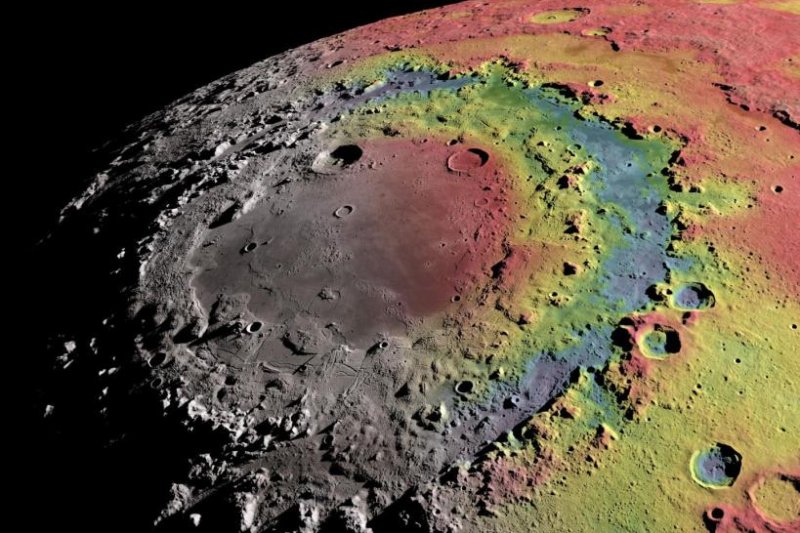New data and a new computer model helped NASA scientists simulate and explain the formation of the rings that mark the moon's youngest impact basin. Photo by Ernest Wright, NASA/GSFC Scientific Visualization Studio
PROVIDENCE, R.I., Oct. 27 (UPI) -- Three concentric rock rings mark a massive depression on the lunar surface, an impact basin known the Mare Orientale. How exactly the impression formed has puzzled scientists for decades.
A pair of new studies, however, offer answers. Scientists at NASA and Brown University, armed with data from the GRAIL spacecraft, have for the first time built a model explaining the crater's formation 3.8 billion years ago.
"Big impacts like the one that formed Orientale were the most important drivers of change on planetary crusts in the early solar system," Brown geologist Brandon Johnson, lead author of one of the studies and a co-author of the other, explained in a news release. "Thanks to the tremendous data supplied by GRAIL, we have a much better idea of how these basins form, and we can apply that knowledge to big basins on other planets and moons."
The new GRAIL data allowed scientists to peer beneath the lunar surface and study the subsurface structures underlying Mare Orientale.
"The beauty of the GRAIL data is that it is like putting Orientale in an x-ray machine and learning in great detail what the surface features correspond to in the subsurface," said study co-author Jim Head, a Brown geologist and scientists on the GRAIL mission.
In most large collisions, the surface rebounds in the aftermath of the shock, erasing the initial impact crater. Such is the case with Orientale. But GRAIL helped scientists find the initial impact beneath the surface. The discovery allowed scientists to estimate how much rock was blasted out by the initial impact.
"We now know what parts of the crust were removed, what parts of the mantle and deeper interior were uplifted, and how much ejecta was removed and redistributed over the whole Moon," Head explained.
The data also allowed scientists to build a model simulating the impact and the rebound, revealing the formation of the three rings. The rebounding crust, hot and pliant, initially flowed inward toward the impact. As the rock flowed inward, it created large cracks and cliffs which formed the outer two rings. The inner ring was formed as molten rebounding material flowed outward, mounding in circular shape.
"This was a really intense process," Johnson said. "These several-kilometer cliffs and the central ring all formed within minutes of the initial impact."
Researchers hope to use their model to study ring formations on other planets, like Mars.
"There are several basins of this kind on Mars," Johnson said. "But compared to the Moon, there's a lot more geology that happened after these impacts that degrades them. Now that we have a better understanding of how the basins formed, we can make better sense of the processes that came after."















